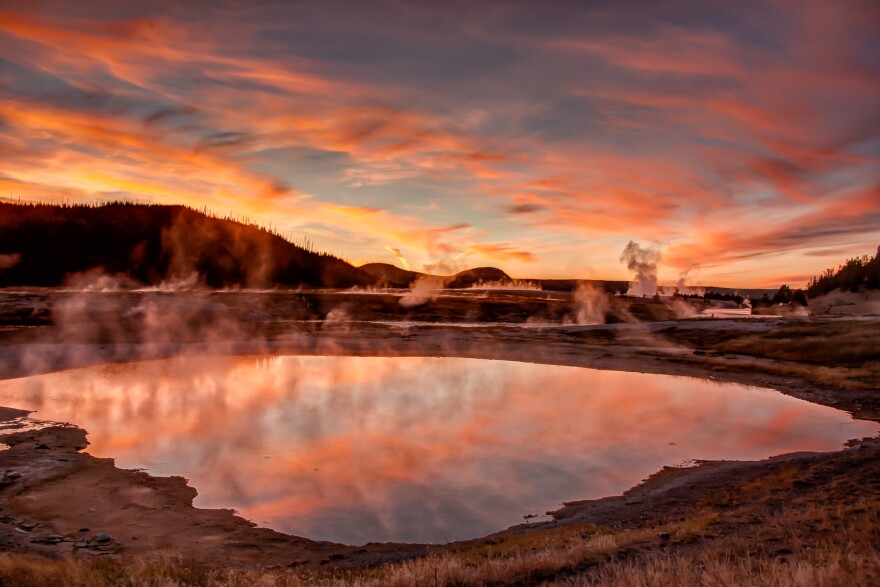A huge amount of ancient helium is rising up from the rocks beneath Yellowstone National Park — about enough to fill up a Goodyear blimp every week.
The gas comes from a vast store of helium that's accumulated in the Earth's crust for hundreds of millions of years, scientists report in the journal Nature this week.
The helium is being released because in the past couple of million years — very recently, in geologic time — that old part of the crust has been feeling the heat from a huge volcano that is now sleeping underneath the park.

Usually, volcanoes form at the edges of the tectonic plates that make up the Earth's crust. But the Yellowstone volcano is in the middle of a plate, says Bill Evans of the U.S. Geological Survey in Menlo Park, Calif.
"It's a part of the crust that formed a very long time ago, billions of years ago, and it's basically been stable since that time," says Evans.
But the plate is moving over a hot spot, and a plume of molten rock from deep within the Earth has been pushing up into these old rocks.
"They've had this boring, peaceful existence and now suddenly they're put on the front burner," Evans says. "They're really getting cooked."
All that cooking is driving out helium that's been trapped inside the rock for a long time, he says.
The finding came as a surprise to scientists who look for clues about what's happening beneath Yellowstone by collecting the gases that bubble up.
Yellowstone is famous for all of its gurgling and burbling. Besides geysers like Old Faithful, there are caldrons of boiling mud that smell of sulfur, and steaming hot springs with sapphire-blue pools.
Jake Lowenstern of the USGS says researchers collect samples of the gases with simple tools like plastic funnels, tubes and probes that they stick in the ground. Then they analyze the gases back in the lab.
"And we had sort of an 'Aha' moment where we realized, wow, that there's a lot of crustal helium coming out of Yellowstone — far more than we would have predicted," Lowenstern says, referring to a type of helium produced by the radioactive decay of elements in the Earth's crust.
As the researchers report in Nature, the amount being released by the rocks below Yellowstone is prodigious.
"It's kind of an interesting thought to us, how these rocks behave," Evans says, "because it's very rare on the face of the Earth to have vulcanism come into rocks that have been that stable for that long."

"This is very unusual," agrees David Hilton, a geochemist at the Scripps Institution of Oceanography in La Jolla, Calif. "It's producing a huge flux of helium."
The only real practical applications of this discovery, however, are for geologists who use helium to do things like figure out the age of groundwater supplies.
Even if Yellowstone weren't a protected national park, it wouldn't be economically practical to try to collect the gas — so don't expect to someday be blowing up party balloons with helium from Yellowstone.
Copyright 2021 NPR. To see more, visit https://www.npr.org.




